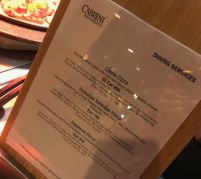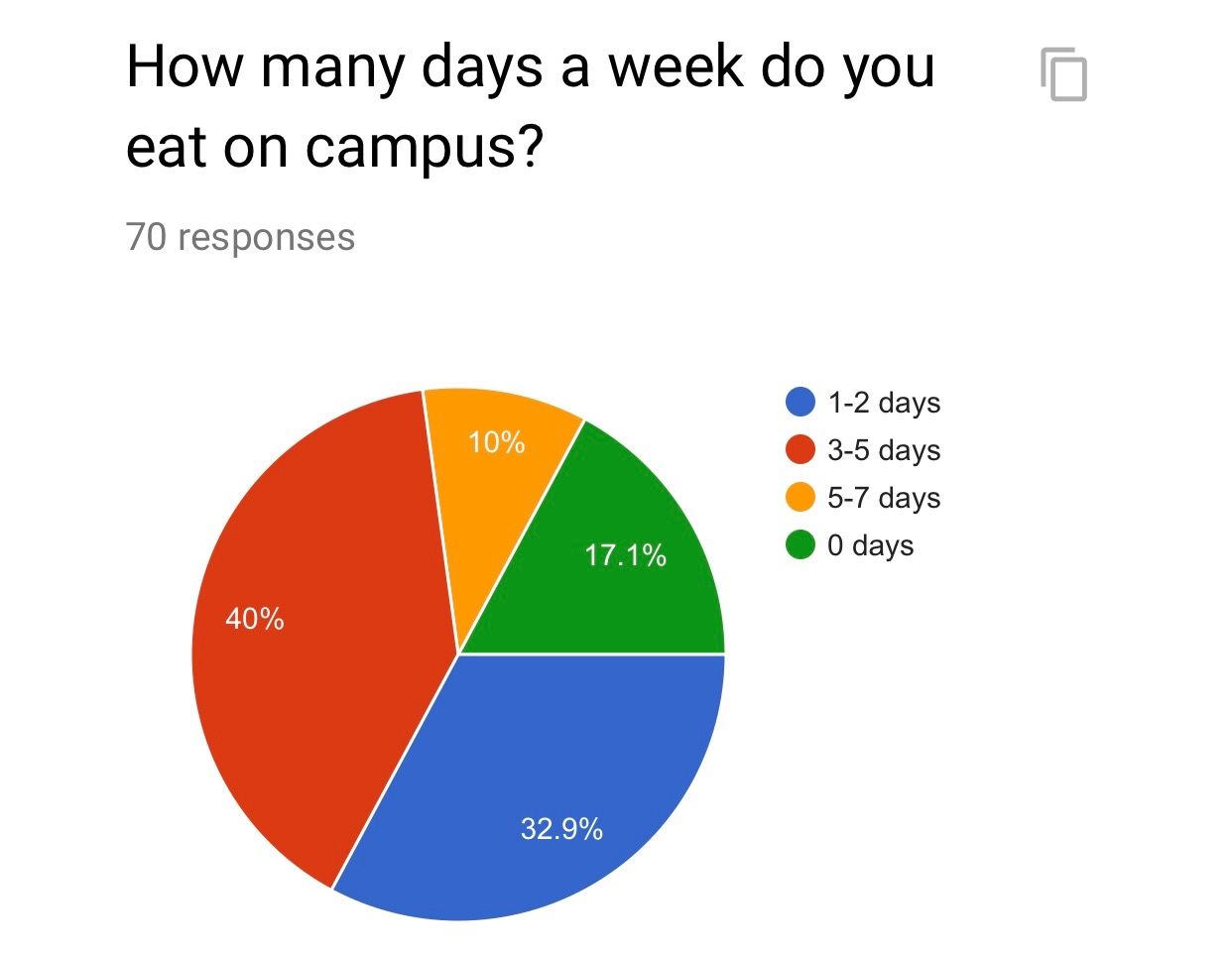Among Cabrini University students, the majority strongly dislikes the food service provider Sodexo. But why? On average, Sodexo is compensated about $3,000,000 a year from Cabrini but students say the quality of food is not what it should be. This is a common issue among all grades and across different colleges and universities. At Cabrini University specifically, in a survey of about 70 students, they consider Sodexo on the bottom of the food chain of food service. Many want changes not only concerning the quality of food, but also more diverse options, taste and most of all expenses.
Sodexo is a national food service founded and headquartered in Paris. In North America alone, the company employs about 160,000 people. Cabrini University is 1 of 13,000 clients here in the United States. The business is known for improving the quality of life through nutritious meals and healthy lifestyles. Even in 2017, in a survey of 3,000 schools, Sodexo was chosen by The Daily Meal to put on its list of Best Colleges for Food. According to this survey, Sodexo was recognized for their sustainability practices, diverse and healthy food options and efforts to educate students about healthy eating.
“Every institution’s meal plan structure is different based on the needs, wants and budgets of the institution. While there are certain common factors such as flex dollars (which may be known under different names by different schools but function the same way) every program is different,” Tracy Eells, general manager of dining services, said.
When students were asked on a survey if the food served and the quality of it is worth Cabrini paying Sodexo an average of $3,000,00 a year, all 70 responses said no.

One student claims there is not different food choices in the cafeteria.
“Absolutely not. There is a limited variety and hardly any options for those with eating restrictions. Vegetarians can hardly find a meal at some points,” the student said.
“We offer gluten-free options such as gluten-free pasta, gluten-free bagels and rolls, and gluten-free pizza shells. I am happy to work with all students who have individual dietary needs to create a plan that suits their dietary needs” Eells said.
For Sarah McCarron, junior criminology and sociology major, her eating experience at Cabrini was especially difficult since developing celiac disease her senior year of high school.
“Having to avoid gluten has gotten easier over the years but in the beginning, it was hard to find food that I could eat. Now I find it very easy to pick out things I can eat without having side effects. Having to avoid gluten affects my eating at Cabrini very heavily. There really aren’t any gluten-free options unless I’m getting a salad or eating fries,” McCarron said.
On top of her gluten intolerance, Sarah used to live on campus and had a 14-meal a week meal plan with a $200 flex but only found herself eating on campus two or three times a week like many other students.
Our survey found that most students were eating on campus three to five days a week at 40 percent. Behind it followed one to two days at 32.9 percent. Third place held 0 days and last was a full week including seven days.

“My two years of living on campus, I can’t remember them ever offering a gluten-free option of pasta, bread, etc. I don’t think I’m the only gluten-free Cabrini student so I think Sodexo could do better accommodating to those with different allergies,” McCarron said.
Gluten free options along with other special eating needs are not always advertised during dining times, which makes students unaware that there are even options for them. This steers them away from eating on campus and in the dining hall.
“If I am paying for a meal plan, I expect to have options for lunch and dinner other than salad and fries,” McCarron said.




Among many unhappy students, commuters find that Sodexo does not accommodate
their needs as well.
The survey results suggested that students either had a meal plan or they didn’t. The most popular meal plan at 44.8 percent was the 14-meal plan with a $200 dollar flex, which is extra cash students can use to buy food during the year at The Cabrini Bean or The Rac. The next biggest percentage was students with no meal plan at 38.6 percent.
“The meal plans are not worth the money. I find that the school food is too expensive, does not offer a selection that I want, and has lines that are too long when I have only 10 minutes between classes. I would like to be able to get lunch in Cav’s Corner because it is take out friendly, but is too expensive and has limited options and unfriendly staff that seem unapproachable,” junior digital communications and social media major and commuter Amanda Zacharias said.
Zacharias does not have a meal plan and packs her lunch every day.
“‘I don’t think commuters are limited to what we can eat on campus, I think everyone is limited,” Zacharias said.
As for a possible solution for the food and service, “I would like to see a wider variety of food options with staff that seems willing to help me when I need it,” Zacharias said.


